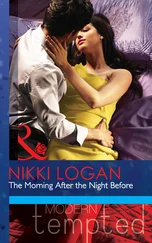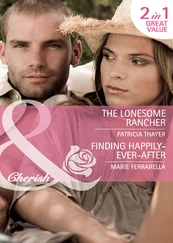There was talk of the march ahead through Lowndes County, where swamps and the woods behind them might easily shelter a sniper in a tree or a canoe. Several marchers claimed to have spotted members of the American Nazi Party along the line of march. Someone mentioned the Ku Klux Klan “counter-demonstration” that had taken place in Montgomery that afternoon.
“And the snakes,” a man said.
“What snakes?” said a Northern voice.
“Copperheads and cottonmouth. It takes the heat to bring them out, but a trooper told me somebody’s caught five baskets full and is letting them go where we camp tomorrow night.”
“How’d the trooper hear about it?”
“Spies.”
“Well, I suppose there might be spies right here in camp.”
“There might. And bombs and mines. They cleared a few this afternoon. Man, this isn’t any Boy Scout jamboree. It’s something else.”
By the time dawn came, the campers were a thoroughly chilled and bleary-eyed group. The oatmeal served at breakfast gave rise to a certain amount of mirth (“Tastes like fermented library paste,” said one of the clergymen), and the news that the National Guardsmen had burned thirteen fence posts, two shovel handles, and an outhouse belonging to a neighboring church in order to keep warm during the night cheered everyone considerably. At a press conference held by Jack Rosenthal, the young Director of Public Information of the Justice Department, the rumors about snakes, bombs, and mines were checked out, and it was learned that none of them were true. A reporter waved several racist leaflets that had been dropped from an airplane and asked whether anything was being done to prevent such planes from dropping bombs. “What do you want us to do?” Rosenthal replied. “Use anti-aircraft guns?”
The procession set out promptly at 8 A.M. The distance to the next campsite — Rosa Steele’s farm — was seventeen miles. Again the day was sunny, and as the air grew warmer some of the more sunburned members of the group donned berets or Stetsons or tied scarves or handkerchiefs around their heads. To the white onlookers who clustered beside the road, the three hundred marchers must have seemed a faintly piratical band. At the head of the line were Dr. and Mrs. King, wearing green caps with earmuffs and reading newspapers as they walked. Not far behind them was a pale-green wagon (known to the marchers as the Green Dragon) with Mississippi license plates, in which rode doctors wearing armbands of the MCHR (the Medical Committee for Human Rights). Farther back were some of the younger civil-rights leaders: Hosea Williams, SCLC director of the march and veteran of the bitter struggle for public accommodations in Savannah, Georgia; the Reverend James Bevel, formerly of SNCC, now SCLC project director for Alabama (Mr. Bevel was wearing the many-colored yarmulke that has become almost his trademark—“a link,” he says, “to our Old Testament heritage”); John Lewis, chairman of SNCC; and the Reverend Andrew Young.
Behind the leaders, some of the main personae of the march had begun to emerge, among them Joe Young, a blind greenhouse worker from Atlanta, Georgia, and Jim Letherer, a one-legged settlement-house worker from Saginaw, Michigan. (“Left! Left! Left!” the segregationist onlookers chanted as Mr. Letherer moved along on crutches.) Chuck Fager, a young worker for SCLC, wearing denims and a black yarmulke, was waving and shouting, “Come march with us! Why don’t you come along and march with us?” (“It sets up a dialogue,” he explained. “The last time I was in jail, a sheriff pulled me aside and asked me where the hell I was from. Any sort of talk like that sets up a dialogue.”) Sister Mary Leoline, a nun from Christ the King parish in Kansas City, Kansas, was talking to John Bart Gerald, a young novelist from New York. “This is a great time to be alive,” she said. A few members of the night security guard had somehow acquired cameras, and they were now photographing bystanders who were photographing marchers; it appeared that a sort of reciprocal Most Wanted list was being compiled. From time to time, the marchers were still singing (“Oh-h-h, Wallace, segregation’s bound to fall”), and the chief of the Justice Department’s Civil Rights Division, Assistant Attorney General John Doar, tall, tanned, and coatless, was striding back and forth along the line of march to see that all was going well.
Around two o’clock, as the middle ranks of marchers passed an intersection just outside Lowndes County, a female bystander apparently could stand it no longer. “They’re carrying the flag upside down!” she screamed to the nearest trooper. “Isn’t there a law against that? Can’t you arrest them? Look at them so-called white men with church collars that they bought for fifty cents! And them de vir ginated nuns! I’m a Catholic myself, but it turns my stomach to see them. They said there was thousands yesterday, but there wasn’t near a thousand. Them niggers and them girls! I’ve watched the whole thing three times, and there isn’t a intelligent-looking one in the bunch. I feel sorry for the black folks. If they want to vote, why don’t they just go out and register? Oh, honey, look! There goes a big one. Go home, scum! Go home, scum!” The procession began to sing a not very hearty version of “A Great Camp Meeting in the Promised Land.”
Not all the bystanders along the road were white. At the boundary of Lowndes County (with a population of fifteen thousand, eighty per cent of them blacks, not one of whom had been registered to vote by March 1, 1965), John Maxwell, a black worker in a Lowndes County cotton-gin mill (at a salary of six dollars for a twelve-hour day), appeared at an intersection.
“Why don’t you register to vote?” a reporter from the Harvard Crimson asked Mr. Maxwell.
“They’d put us off the place if I tried,” Mr. Maxwell said.
In the town of Trickem, at the Nolan Elementary School— a small white shack on brick stilts, which had asbestos shingles, a corrugated-iron roof, six broken windows, and a broken wood floor patched with automobile license plates — a group of old people and barefoot children rushed out to embrace Dr. King. They had been waiting four hours.
“Will you march with us?” Dr. King asked an old man with a cane.
“I’ll walk one step, anyway,” said the man. “Because I know for every one step I’ll take you’ll take two.”
The marchers broke into a chant. “ What do you want? ” they shouted encouragingly to the blacks at the roadside. The blacks smiled, but they did not give the expected response—“ Freedom! ” The marchers had to supply that themselves.
Late in the afternoon, as Route 80 passed through the swamps of Lowndes County, the marchers looked anxiously at the woods, covered with Spanish moss, which began a few yards back from the road. They reached Rosa Steele’s farm at sunset. Many of them seemed dismayed to find that the campsite lay right beside the highway. Fresh rumors began to circulate: a young man had been seen putting a bomb under a roadside bridge; twenty white men, with pistols and shotguns, had been seen prowling through a neighboring field; testing security, a representative of the Pentagon had managed to penetrate the security lines without being asked to show his pass. Mr. Rosenthal again put these fears to rest. “The field has been combed by Army demolition teams,” he said. “If anyone from the Pentagon had made it through unchecked, you can bet there would have been one hell of a fuss. And as for the man under the bridge, it was a little boy who got off his bicycle to relieve himself. The troopers found out these things. It’s nice to know that they are this aware.”
As darkness fell, Dr. King held a press conference. A black woman lifted up her three-year-old son so that he might catch a glimpse of Dr. King. She soon grew tired and had to put him down. “I’ll take him,” said a white man standing beside her, and he lifted the boy onto his shoulders. The boy did not glance at Dr. King; he was too busy gazing down at the white man’s blond hair.
Читать дальше

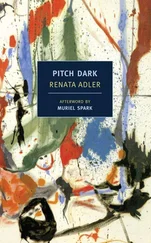


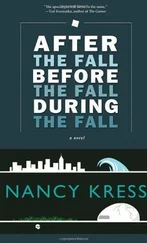
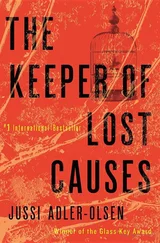
![Джеффри Арчер - The Short, the Long and the Tall [С иллюстрациями]](/books/388600/dzheffri-archer-the-short-the-long-and-the-tall-s-thumb.webp)
